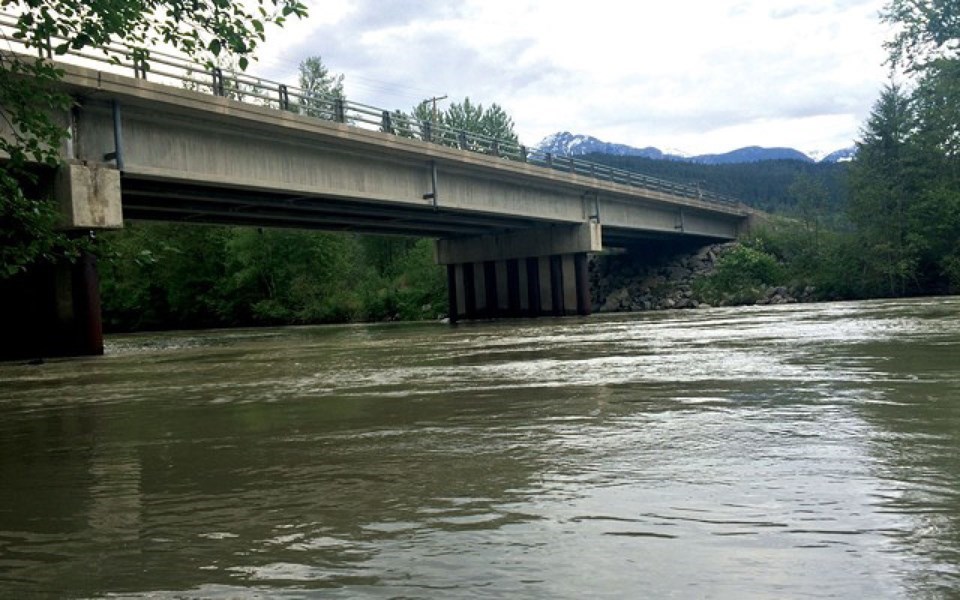The Pemberton Valley Dyking District (PVDD) is requesting changes to a couple of provincial policies in order to allow it to operate more efficiently.
One is to allow it to continue as an improvement district, even though the provincial government started phasing out such organizations more than a decade ago by restricting the ability to directly apply for funding.
In a letter addressed to Minister of Municipal Affairs Josie Osborne, PVDD operations and maintenance manager Kevin Clark noted that, since its goal is to impartially serve the Village of Pemberton (VOP), Lil’wat Nation and the Squamish Lillooet Regional District (SLRD), it is hindered by the limitation.
“We don’t want any special treatment, we just want to be able to compete [for funding],” Clark told VOP officials at a February council meeting. “We’re just asking to allow us to put in a great funding application with … science and rationale to back it up and be allowed to compete for that in the same way that, this year, the Village and the SLRD and Lil’wat were allowed to.”
Clark reviewed other improvement districts that handle diking and felt many could feasibly be absorbed into a nearby local government, but it’s not the case with the PVDD.
“We have a very unique situation where we cover diking and flood infrastructure, which goes through all three jurisdictions,” Clark said. “Our existence in its present form provides the best outcome for the valley as we try to be a neutral third party and not be seen to be catering to any one person.”
Clark added that he anticipates that allowing the PVDD to compete for funding will open up access to money over and above what the three local governments can ask for.
“That would put us into the realm of being able to actually try to protect ourselves because we’re always that little bit short,” he said.
The Ministry of Municipal Affairs is working on a response to Clark’s letter, said a ministry spokesperson, before adding that, “As we do with all governments and districts, we are open to providing advice, discussing how best to meet their service needs for local citizens, and will response to them on any questions or concerns they may have.”
Clark’s second concern, outlined in a letter addressed to Inspector of Dikes Mitchell Hahn, revolves around PVDD’s inability to raise a 1.4-kilometre section of Miller Lillooet dike from the CN bridge approaching Highway 99, as the project would not meet a set of seismic guidelines, meeting a one-in-2,475-year standard, set forth in 2014.
“That section of dike we know will overtop in around a one-in-50-year event, which we almost had in 2016 and we’ve had several near misses since and prior,” Clark said. “The actual ground under Pemberton will liquefy in a one-in-600-year seismic event.
“These guidelines are well outside of what’s realistic.”
A spokesperson for the Ministry of Forests, Lands, Natural Resource Operations and Rural Development (FLNRO) told Pique that, because it has yet to receive a maintenance application from the PVDD for the Miller Lillooet dike, it cannot at this point determine if it would be eligible for a relaxing of the seismic guidelines, but that such asks would be considered on a case-by-case basis. (For his part, Clark said he has provided the ministry with ample engineering data on the dike’s flood risk.) A number of factors must be considered before relaxing the guidelines, the spokesperson said, including analysis of performance under various seismic and flood conditions and “a robust” post-earthquake response plan.
“Relaxation is a serious consideration and may require a resolution in council (not just letters of support) so that the public is well informed that a dike is being built to a sub-standard and that future development in the area is approved with full knowledge of this deficiency,” the spokesperson said.
The ministry representative also noted that Engineers and Geoscience BC is currently drafting guidelines “to assist qualified professionals in undertaking the design and analysis of seismic dikes including a proposed alternate method to ‘meet’ the provincial guidelines’ intent” without fully meeting the performance criteria.
Clark said the PVDD is investigating other mitigation options, such as replanting slide debris up at Mount Meager, and investigating density of development on its own dime.
“We have very high confidence that a one-in-100[-year] seismic event is not an issue, a one-in-475-year event is not an issue,” he said.
Clark is also concerned about proposed changes to Emergency Program Act, which will add language such as preparedness, mitigation, response, recovery to what is required from local governments, essentially “downloading responsibility” from what has traditionally been federal and provincial duties. While landowners can currently apply to a joint federal and provincial Disaster Mitigation Fund in the event of a flood, local municipalities would shoulder some burden if the changes pass.
That said, Clark sees a pretty significant loophole if it can’t improve the Miller Lillooet dike because of the seismic guidelines.
“If they say no, then they’re taking our ability to protect ourselves away, which brings up a whole other conversation of indemnification,” he said. “We can’t be held liable for a flood that we weren’t allowed, by legislation, to protect ourselves from.”
In response, the FLNRO spokesperson said B.C.’s Dike Maintenance Act only allows an inspector to designate liability “to dikes that are built, modified, and not maintained to the standards imposed by the inspector or without approval as required under the Dike Maintenance Act. Meeting these standards does not provide insurance or guarantee that a dike will not fail and does not covered liability beyond the scope of the Act if a dike should fail. As such, liability beyond this is outside the authority of an inspector to answer.”




